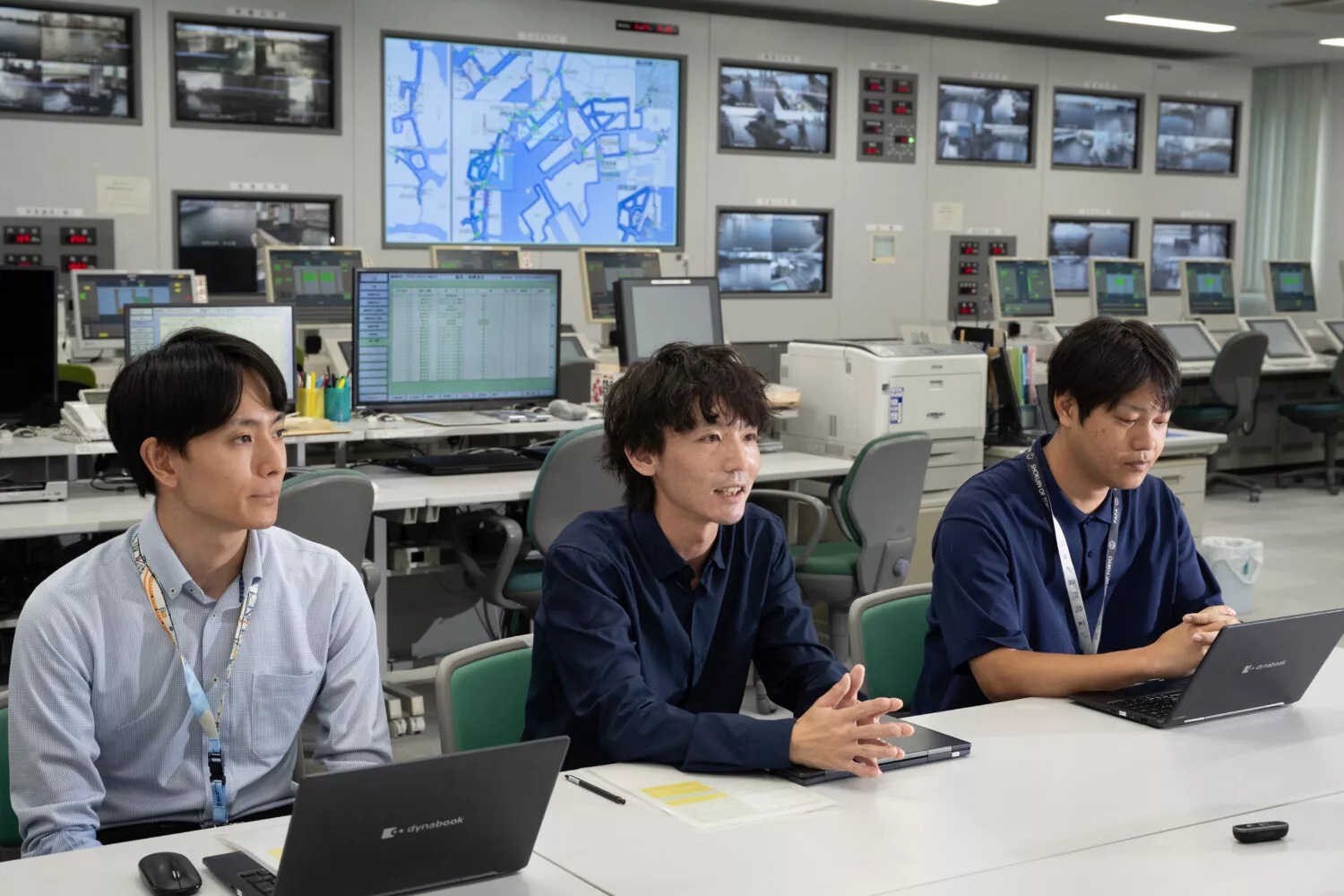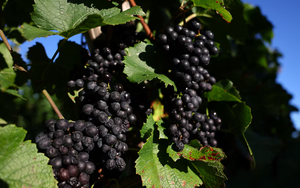
The Mudflat Club members of Tokyo Metropolitan Shiba Commercial High School. Photo: Tokyo Metropolitan Government
Citizen initiatives
The Tokyo Metropolitan Shiba Commercial High School is located on Tokyo's waterfront.
The high school offers many unique extra-curricular club activities, but one in particular stands out: the Mudflat Club.
The members of this club work proactively on the mudflat of WATERS takeshiba, a multipurpose complex close to the school.
During the monthly Takeshiba Mudflat Open Days, the club members exchange opinions with mudflat researchers and also interact with children living nearby.

The Takeshiba Mudflat in WATERS takeshiba. In addition to jellyfish, other organisms like Gobioidei, black seabream, Japanese sea bass, shrimps and crabs also live here. Photo: Tokyo Metropolitan Government
One of the members, Taguchi Kumino, says that coming into contact with Takeshiba's nature and organisms and watching visitors have fun heightened her awareness of conserving the environment in Tokyo.
"We learned about waste issues in class at school, but when I actually started to pick up trash on the mudflat, I was shocked to see how much of it really washes up, including microplastic waste," she says.
"Seeing the situation up close made me talk to family and friends about protecting nature and organisms by not just stopping ourselves from throwing trash into nature but also making an effort to not produce waste at all."
Through their club activities, the members have learned the preciousness of nature and living creatures.
Their goal is to sell 200 copies of the picture book created by previous members, Visit to a Mudflat, and continue communicating the wonders of the Takeshiba Mudflat.
Urban biodiversity

Members of the Weed Research Club collecting weeds on school grounds. Photo: Tokyo Metropolitan Government
At a high school in central Tokyo with a view of the National Diet Building, a group of students are passionately engaged in a rather unusual activity—picking, observing, and at times even eating, weeds!
Members of the Weed Research Club at Tokyo Metropolitan Hibiya High School are working to uncover the potential of the diverse natural life quietly thriving in the corners of the city, and in doing so cultivating a new vision for how cities and nature can grow together.
These young botanists have their own original field guide, Flora of Hibiya High School, that they inherited from former members.
They have used it to create a weed map of the school grounds and have even discovered rare plants onsite.
"We once stumbled upon corydalis, a plant listed on the Tokyo Metropolitan Government's 'Red List of Threatened Species,' right on our school grounds. It had these bright yellow flowers that made it stand out, and when we looked it up, we realized it was endangered," explains club president Tsutsumi Yugo.
"Knowing a plant like that exists right here on school grounds made us feel a real sense of urgency. Since we've been lucky enough to find it, we want to protect it as much as possible, and make sure the research is documented properly."
Tsutsumi notes that observing these humble plants has gotten him thinking about how we can live sustainably with nature in cities and the mindset shift this requires.
"Plants are fighting to survive too, but sometimes they do get in the way of human life. Ideally, I'd like them to coexist with us without causing us too much trouble."

Wild herb tea that the students brewed on the day of the interview, using mugwort and chameleon plant leaves they had picked. Photo: Tokyo Metropolitan Government
AI-assisted resilience
For centuries, Tokyo has expanded toward the bay, creating one of Japan's busiest hubs for trade and daily life, but also areas that are at low elevations, including many "zero-meter zones."
Roughly 1.5 million people now live in areas that would flood with each high tide if not for protective infrastructure.

A beyond-visual-line-of-sight drone test inspects coastal protection facilities across a wide area. Photo: Tokyo Metropolitan Government
Physical defenses remain essential, but the Tokyo Metropolitan Government (TMG) is now reinforcing them with digital transformation (DX).
The initiative integrates new technologies into coastal protection in four key ways.
First, an online Storm Surge Disaster Prevention Information System publishes tide levels, floodgate status, and live camera footage in real time.
Second, a Storm Surge Risk Search Service allows residents to enter an address and instantly see how deep flooding could become in a major storm surge.
Third, an AI-based model processes tide and weather data to forecast water-level changes up to fifteen hours ahead, supporting floodgate and pump station operations.
Finally, TMG officials are building in-house capacity to use drones for rapid, safe inspection of facilities during disasters.

Inside the Storm Surge Management Center in Tatsumi, rows of screens track tide levels and gate positions. Here, the TMG officials describe how these new tools have changed their work. Photo: Tokyo Metropolitan Government
The TMG's approach is also being recognized internationally.
In 2025, the city's AI water-level prediction system was presented at the Smart City Expo World Congress in Barcelona.
Multilingual features have been added to the information systems so that residents and visitors alike can understand risks and prepare.
The message is clear: disaster prevention is not only a local issue, but a shared responsibility.




Max: 1500 characters
There are no comments yet. Be the first to comment.